
I’m a very long-time iPhone user. In fact, I’ve never had an Android phone as my personal phone before. Although I had been curious about Android phones in the past, I was okay with Apple’s ecosystem. More recently, foldable smartphones have become a thing, and I’d be lying if I said I didn’t want one. Now I have finally had the opportunity to try out the Galaxy Z Flip 3 for the past month. Read on for this iPhone user’s thoughts on the experience.
Table of contents
Foldable phones
Android phone manufacturers have been launching foldable phones for a while now. However, the first iterations of this kind of smartphone were not exactly user friendly. In fact, they looked more like prototypes than finished products.
In 2019, Samsung announced the first Galaxy Fold, which came as a sort of tablet that could be folded to be used as a phone or vice versa. The idea was promising, but Samsung put that phone into people’s hands before it was ready. It wasn’t long before the internet was flooded with reports that the Galaxy Fold display was super fragile and broke easily.
And honestly, I wasn’t surprised at all. In order to make a phone that folds, manufacturers had to replace glass with a flexible composite material. At the same time, Samsung hadn’t told users that they couldn’t take off the screen protector that came installed by default. It was a nightmare.
But Samsung has learned a lot since the first Galaxy Fold. In 2020, the company announced the Galaxy Z Flip – also a foldable phone, but one that doesn’t turn into a tablet. This one looked much more interesting than the Galaxy Fold to me. Now in its second generation (there never was a Galaxy Z Flip 2), I finally gave Samsung’s foldable phone a chance.
Update: As experienced by 9to5Google’s Ben Schoon, the Galaxy Z Flip 3’s display is still not perfect when it comes to durability. However, during the time I’ve been using the phone, I haven’t had any problems with the display.
First impressions of the Galaxy Z Flip 3
As I took the Galaxy Z Flip 3 out of the box, it felt like any other smartphone since it comes “unfolded.” However, as soon as I got my hands on it, the first thing I did was to fold it. It’s just unbelievable that there’s a true smartphone with an OLED panel that purposefully folds. The experience of actually folding it was a strange mix of nostalgia and high-tech.
The hinge in the middle of the phone is protected by what Samsung says is a “strong Armor Aluminum Frame.” I can’t tell you how strong it is, but it definitely feels like a robust hinge. And, Galaxy Z Flip 3 is water resistant. (I wasn’t brave enough to put that to the test).
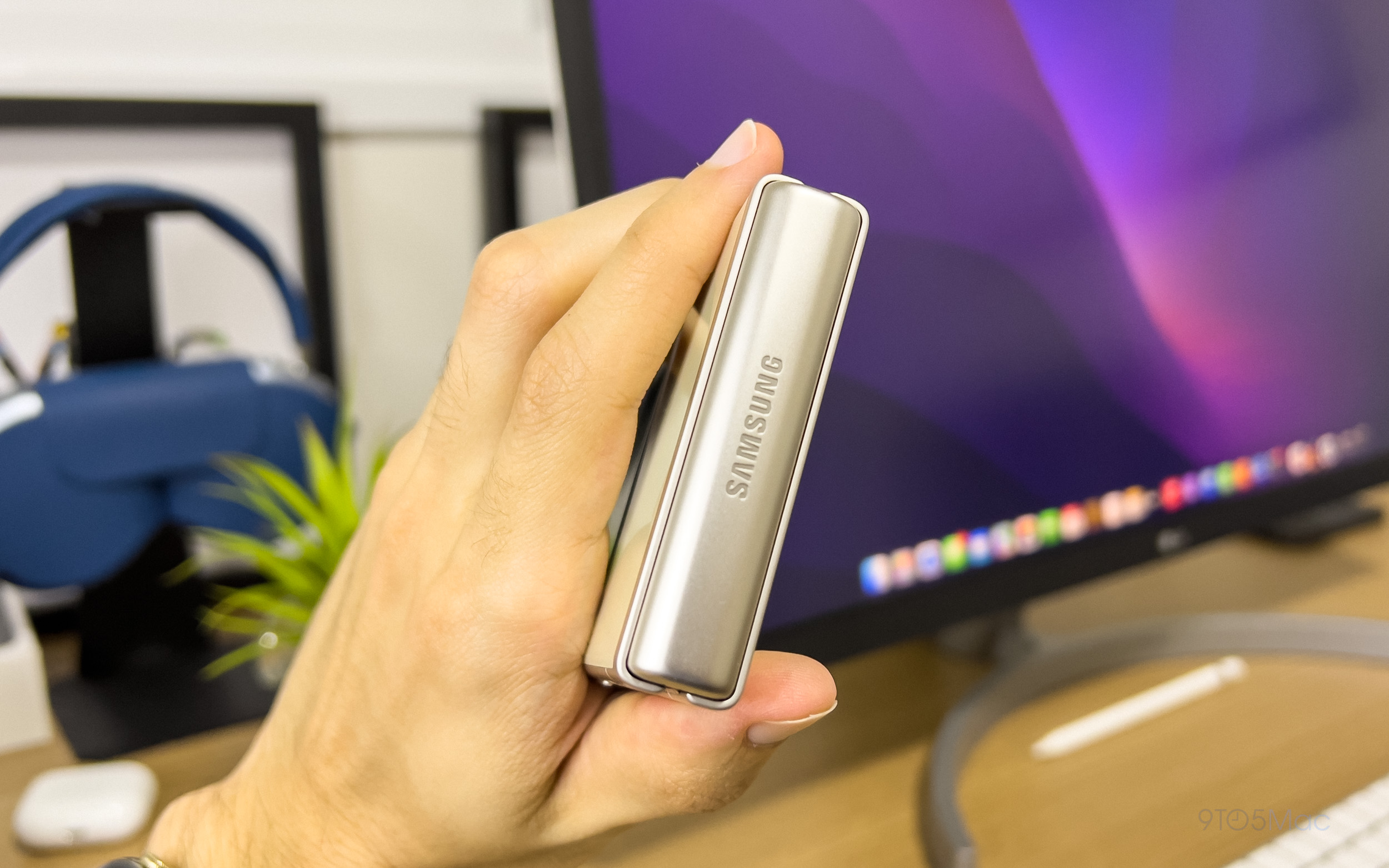
One nice thing about the hinge is that it holds the display at the angle you have chosen, so it’s quite flexible in this regard. At the same time, the hinge is soft enough that you don’t feel like you’re going to break the phone. Just keep in mind that unfolding the phone with just one hand is not exactly an easy task.
Galaxy Z Flip 3 is made of glass on its back with an aluminium frame. The design is not as premium as the Galaxy S22 or even an iPhone 13 Pro, but I must say it is lovely. And, while I’m talking about design, Z Flip 3 is super light. It’s 183g vs the 240g of the iPhone 13 Pro Max – and they’re almost the same size. The iPhone’s weight is definitely something that bothers me.
It folds! So what?
So yes, Galaxy Z Flip 3 is a phone that folds. But what exactly does this mean for the user, especially when it comes to a device that doesn’t turn into a tablet?
When the hype wears off, you wonder “what am I going to do with a foldable phone?” After using it for a month, I discovered some fun things that made me love this phone. For example, I can place it on a table to easily keep reading a recipe, an article, or even the lyrics to a song.
Some of Samsung’s apps are optimized for foldable phones. If I fold the phone when I’m browsing through my photos, half of the screen turns into a trackpad so I can swipe between photos and even zoom in or out while the image appears at the top of the screen.
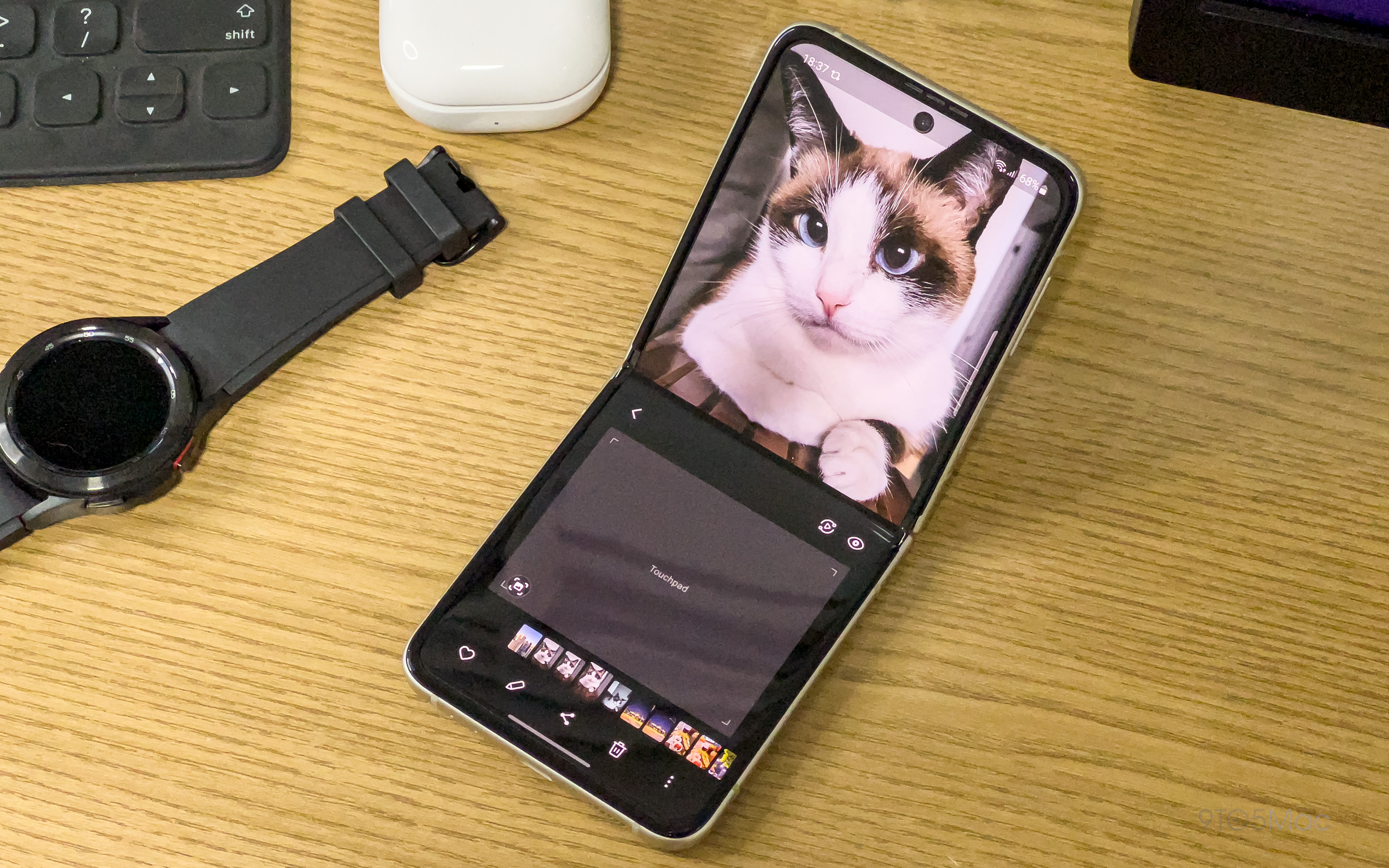
This is also quite useful for taking group selfies from a long distance away without someone to hold the phone, or stabilizing it to take a better night photo.
Putting the Galaxy Z Flip 3 in my pocket is also easier since some of my pants have small pockets. This should be great for people who carry with them only a small handbag that normally wouldn’t fit a smartphone like the iPhone 13 Pro Max in it.
When the phone is closed, you can use the rear cameras to take pictures, which results in better images than those captured by the front camera. This is made possible by a small display built into the back of the Galaxy Z Flip, which also shows some widgets like clock, weather, and calendar.
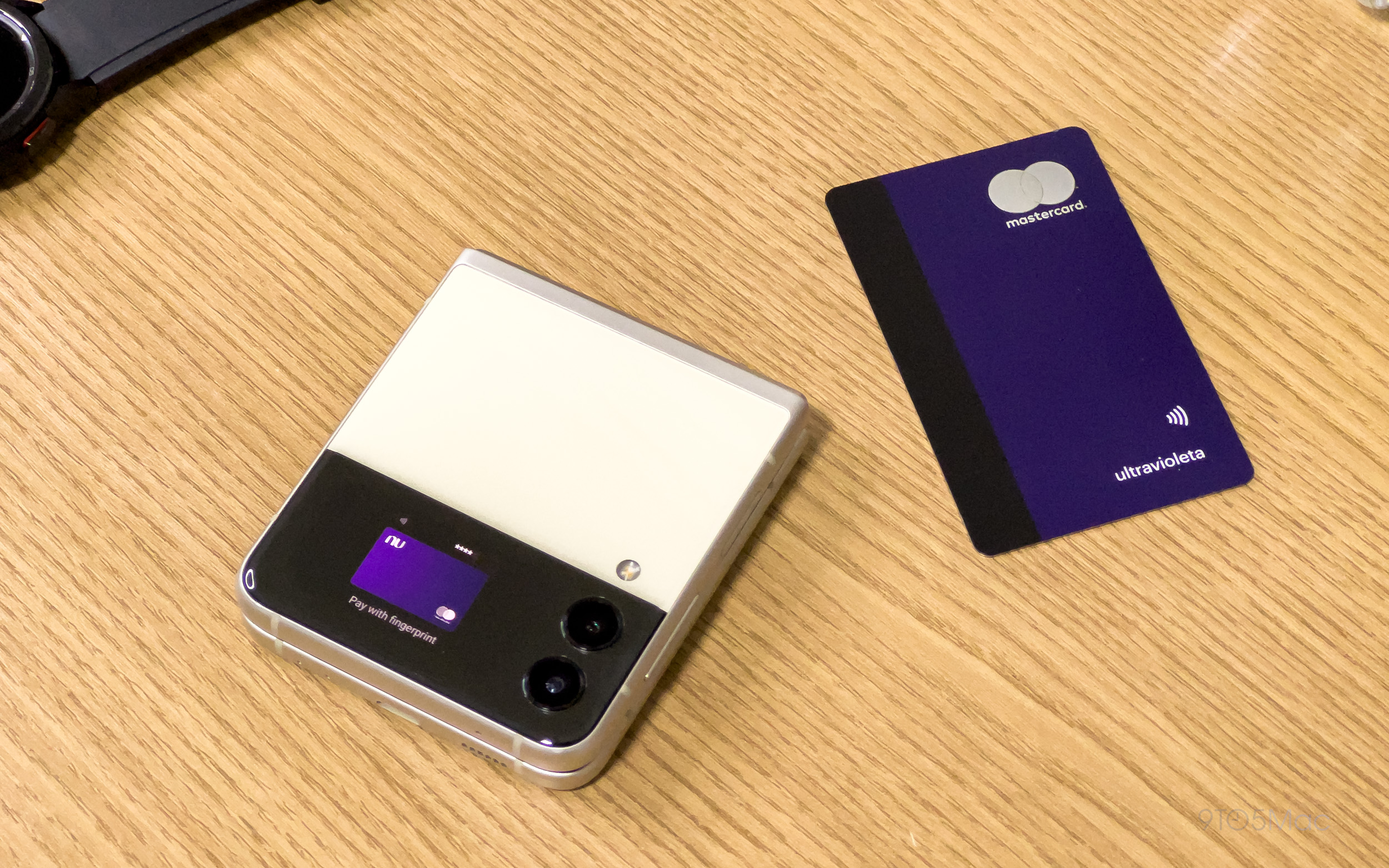
I can even access Samsung Pay from this external display and pay in stores just by putting my finger on the fingerprint reader without having to open the phone.
It runs Android.
As I said before, this was my first contact with Android in years, and things are quite different now. Samsung’s One UI is quite polished and fluid, and overall I haven’t noticed any performance issues or app crashes while using the Galaxy Z Flip 3.
To be honest, I’ve been having a lot of fun using Android recently. I never cared much about customizing my home screen or changing aspects of my phone’s interface, but maybe that was because the iPhone never gave me these options. Android lets me freely move icons and widgets around on the home screen and even change the look of notifications.
When you choose a new wallpaper, you have the option of changing the entire system interface to match the colors of the image you have chosen. It’s a simple thing, but it makes the user experience more fun.
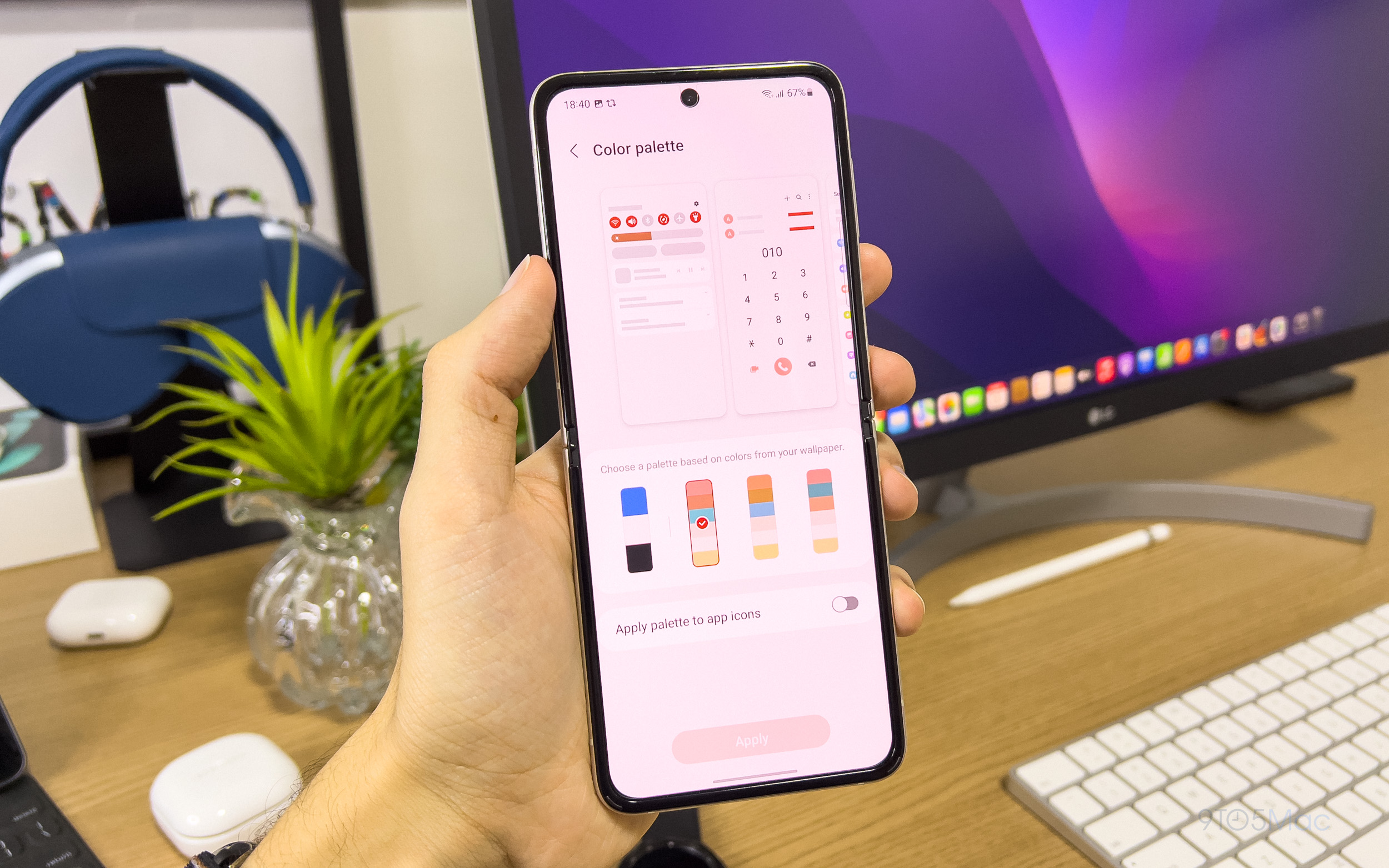
The freedom of sideloading and replacing default apps is also tempting. I can choose my default keyboard, music player, photo app, and anything else. Also, Samsung’s One UI has some really smart features, such as quick access to the clipboard right from the keyboard. I also noticed that the interface is easier to use with one hand than iOS.
I also liked that the phone has an always-on display, so I can check the battery level without having to turn it on.
Android’s multitasking capabilities are also clearly ahead of the iOS. I never thought that being able to split the screen between two apps or even open a floating window would be useful on a phone, but believe me, it is.

In contrast, I can clearly see the aspects that make me like iOS. The consistency between apps is much better on the Apple side. Overall, iOS apps follow the same design guidelines and the usability between them is similar.
In apps like Twitter and Instagram, it’s clear that the developers pay more attention to iOS apps than Android apps, which lack some of the gestures and refinements that you find on iPhone. And keep in mind that there are virtually no third-party apps that take advantage of foldable displays.
Samsung’s ecosystem
Like Apple, Samsung has been trying to create its own ecosystem of products and services. And although Samsung doesn’t make the software running on its phones and laptops, they can easily interact with each other. Galaxy users can access notifications, text messages, calls, and even clipboards directly from their Windows PCs.
As for accessories, pairing the Galaxy Buds 2 with the Z Flip 3 was super easy and quite similar to the process with AirPods and iOS. You just open the earphones case near your phone and that’s it.
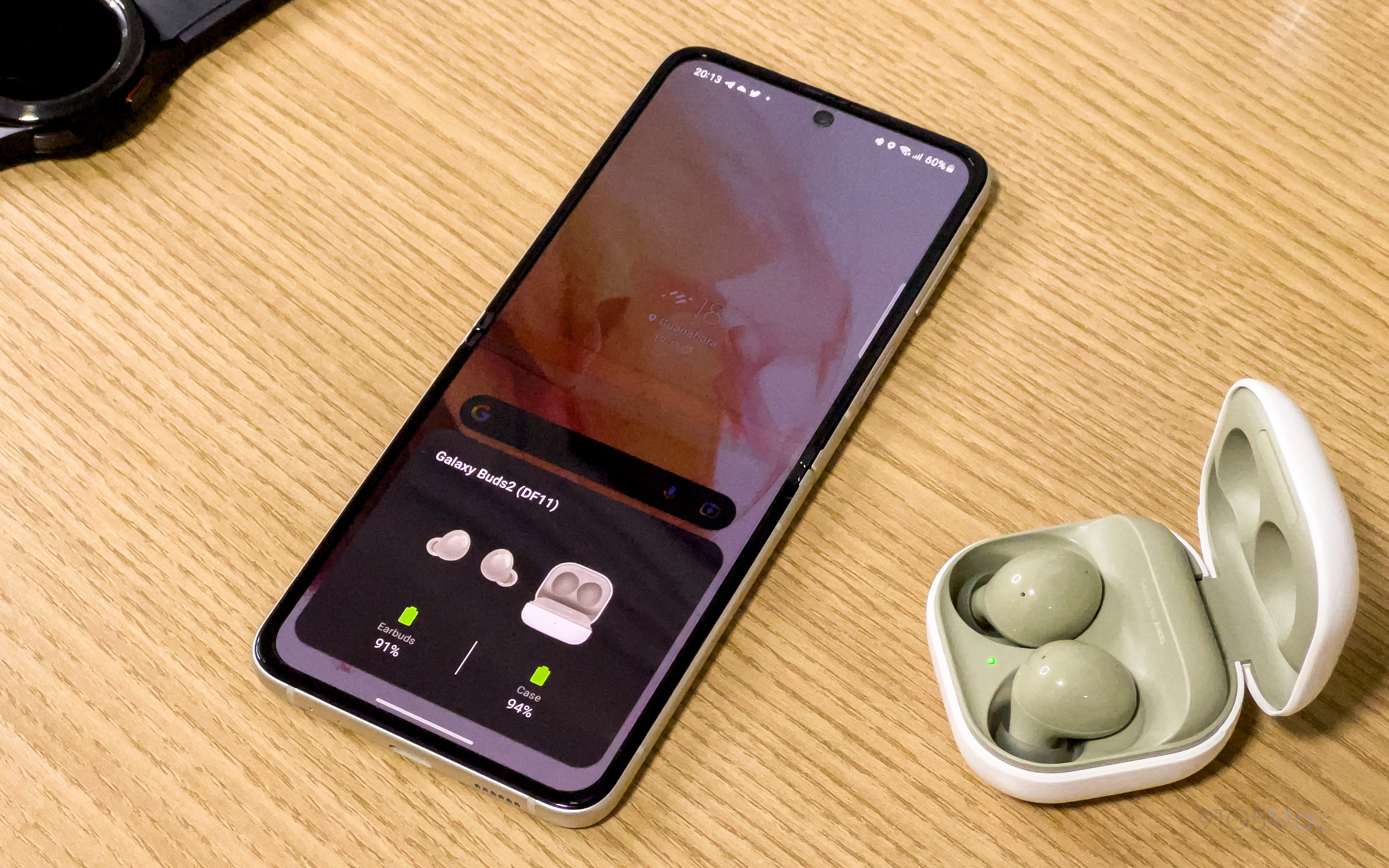
But more than that, I found the interaction that Galaxy phones have with other Samsung products like washing machines and smart TVs super cool. I can do things like mirror what’s on my TV to my phone and even enable an option to automatically mute the TV when I receive a call on my Z Flip 3.
Apple still has a more solid ecosystem, but Samsung has been getting closer in this aspect.
Apple’s walled garden
My biggest problem with Android wasn’t exactly with Android, but with the fact that Apple locks users into its “walled garden.” You can get some data from iCloud like contacts and emails, but it’s not exactly easy.
When it comes to photos, files, and other things stored in iCloud, good luck. The only way to access them on Android is to use the iCloud web app. But what I really missed while using Android was iMessage.
There’s a whole discussion about this, and now I could experience how bad it is not to have access to iMessage on other platforms. I can easily contact my friends and family from any platform with apps like WhatsApp and Telegram. But when I was using my Galaxy phone, I wasn’t able to receive and send iMessages.
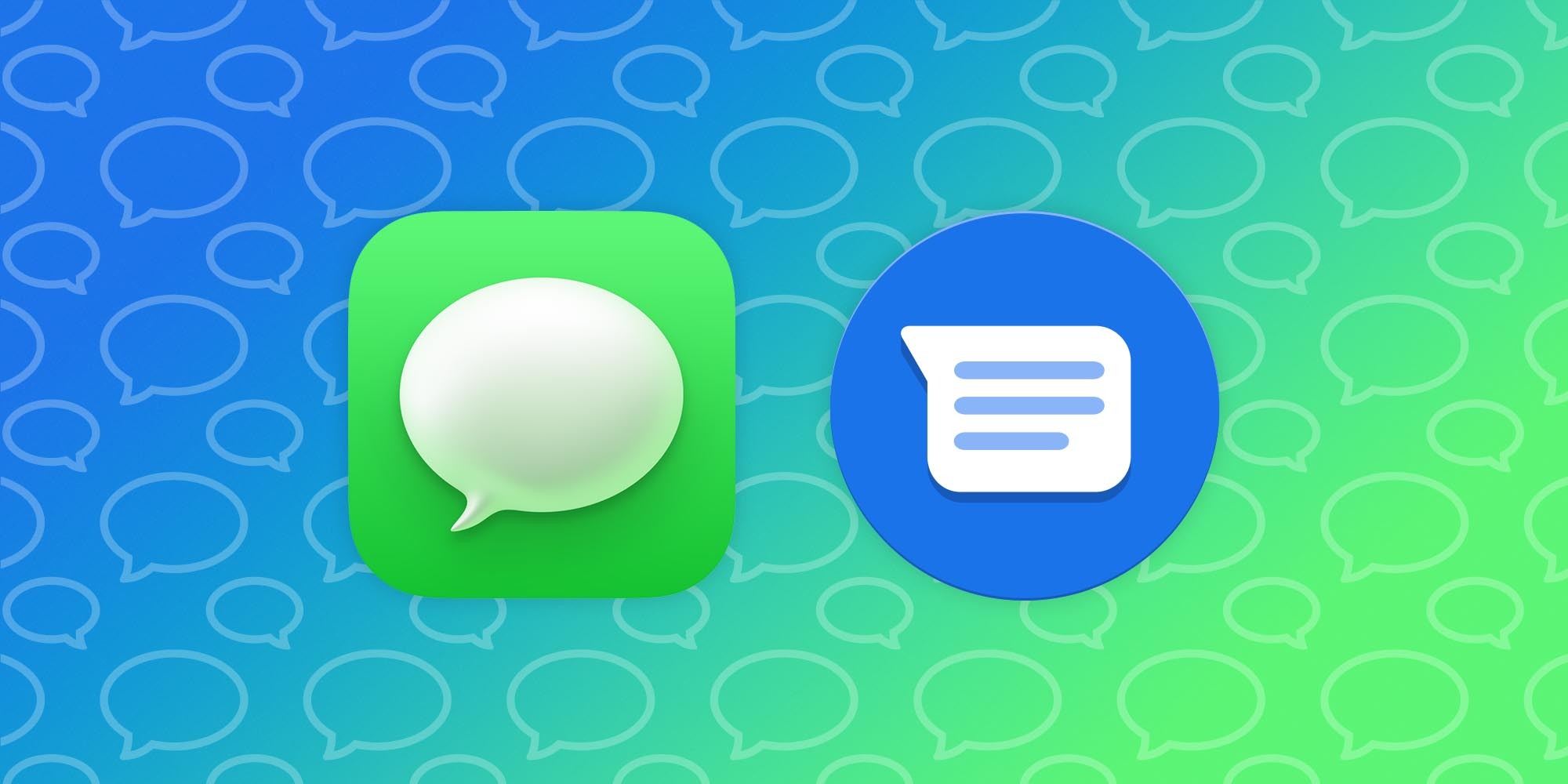
Apple has been slowly bringing some of its services to other platforms, such as Apple Music (which works better on Android than on iOS). But unfortunately, the company still does everything it can to prevent users from considering switching to Android. You can make the switch, but you will certainly lose some important things.
Other tidbits about Galaxy Z Flip 3
One of the features I use most on my phone is the camera, and while the Galaxy Z Flip 3 has reasonable cameras, they’re not as good as those on the iPhone 13 Pro or other flagship phones. The 12-megapixel wide and ultra wide cameras are good for taking pictures in sunlight, but pictures taken at night get washed out.
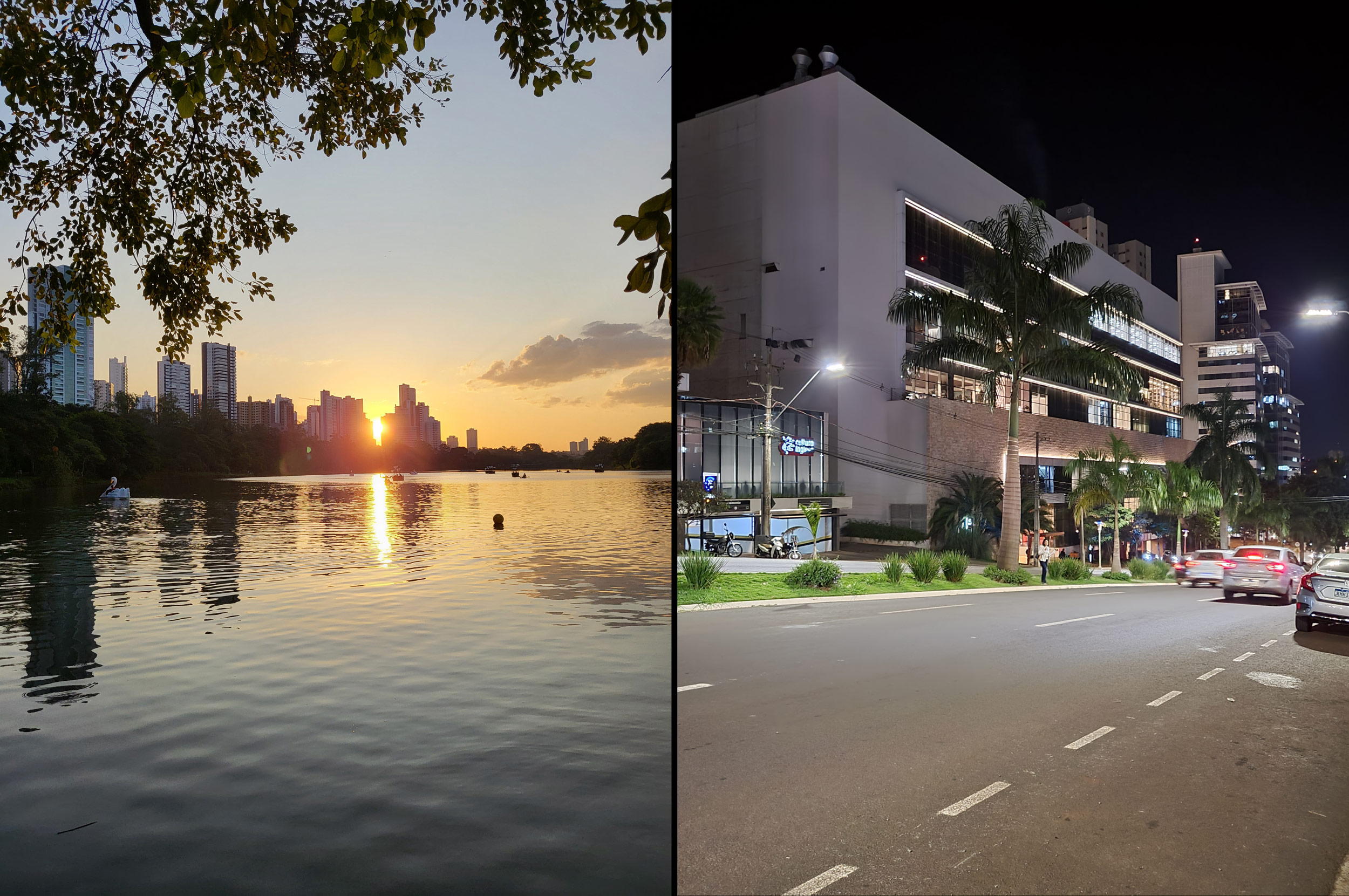
Galaxy Z Flip 3 can also shoot 4K video at 60fps, but the quality is far from exceptional. At least it has a “Super Slo-mo” mode that records short videos at 960fps for a super dramatic effect.
The quality of the built-in speakers is just ok, but the 6.7 inch AMOLED display with 120Hz refresh rate is great. And yes, you can notice and feel the crease in the middle of the display, but it’s something you eventually forget is there, just like the iPhone’s notch.
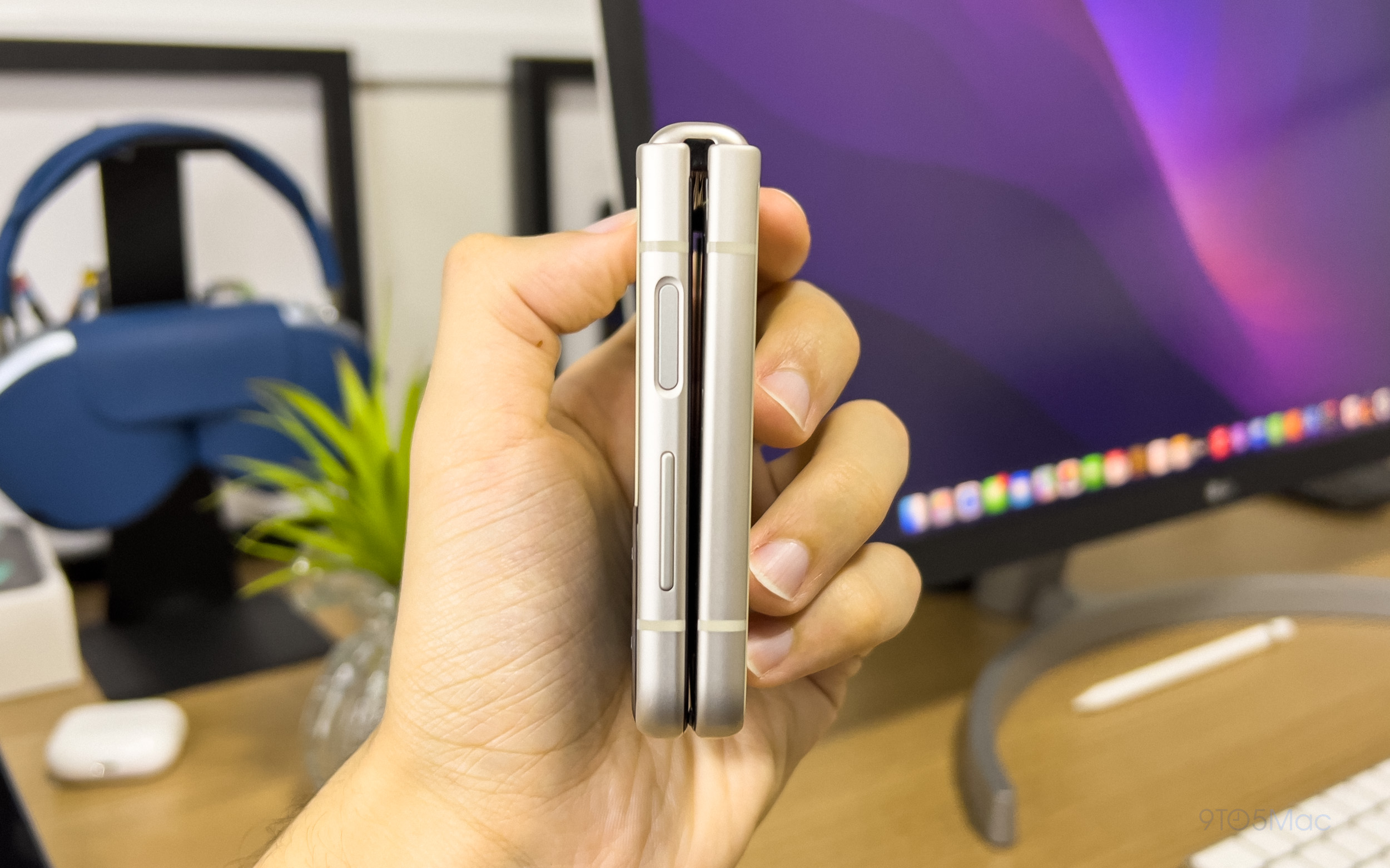
By the way, having a phone with a USB-C connector is just amazing. I can easily recharge my MacBook, iPad, Galaxy phone, and other Samsung accessories using the same cable. Meanwhile, iPhone still has Lightning. I have also tried reverse charging, and although it is not a huge thing, it can be useful for emergencies.
Battery life is not good, though. It’s enough to last a day if you’re not a heavy user, but I usually need to recharge it twice a day.
The verdict
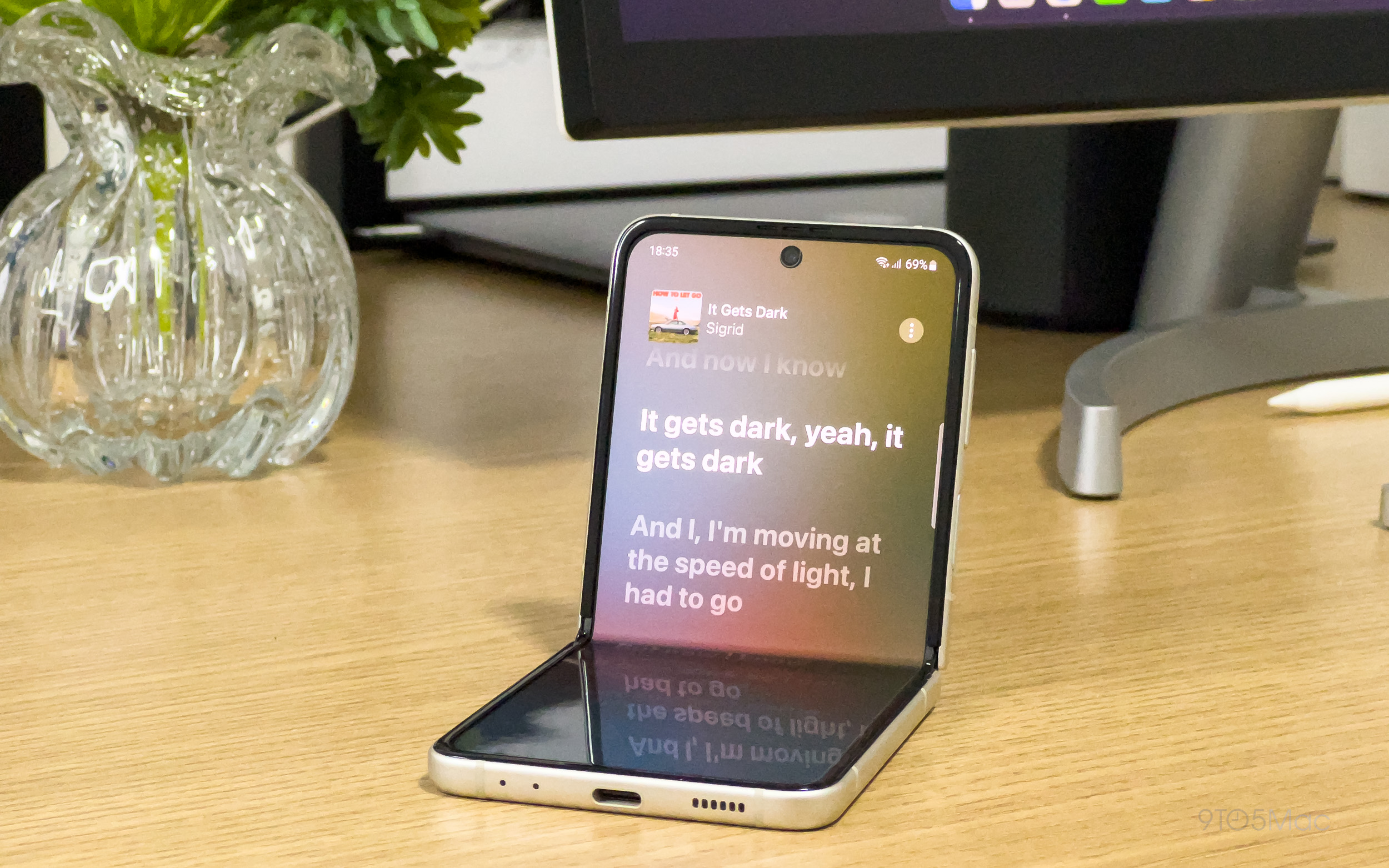
I loved using the Galaxy Z Flip 3. I was so used to the iPhone that I forgot how exciting it is to get my hands on brand new technology. More than that, I had fun learning how to use Android’s features.
I don’t think foldable phones are ready for everyone yet, but Galaxy Z Flip 3 is certainly the foldable that comes closest to being a foldable phone for the masses. And it’s definitely the foldable phone that has convinced me that I want to see a foldable iPhone in the future.
Foldable phones are not exactly a revolution, but once you use one, you learn to like them. I’m definitely excited to see what’s next for foldable phones.
And of course, I enjoyed using Android more than I had imagined. I don’t think I will ever replace my iPhone for many reasons, but now I like the idea of having a secondary Android phone around.
Author: Filipe Espósito
Source: 9TO5Google



